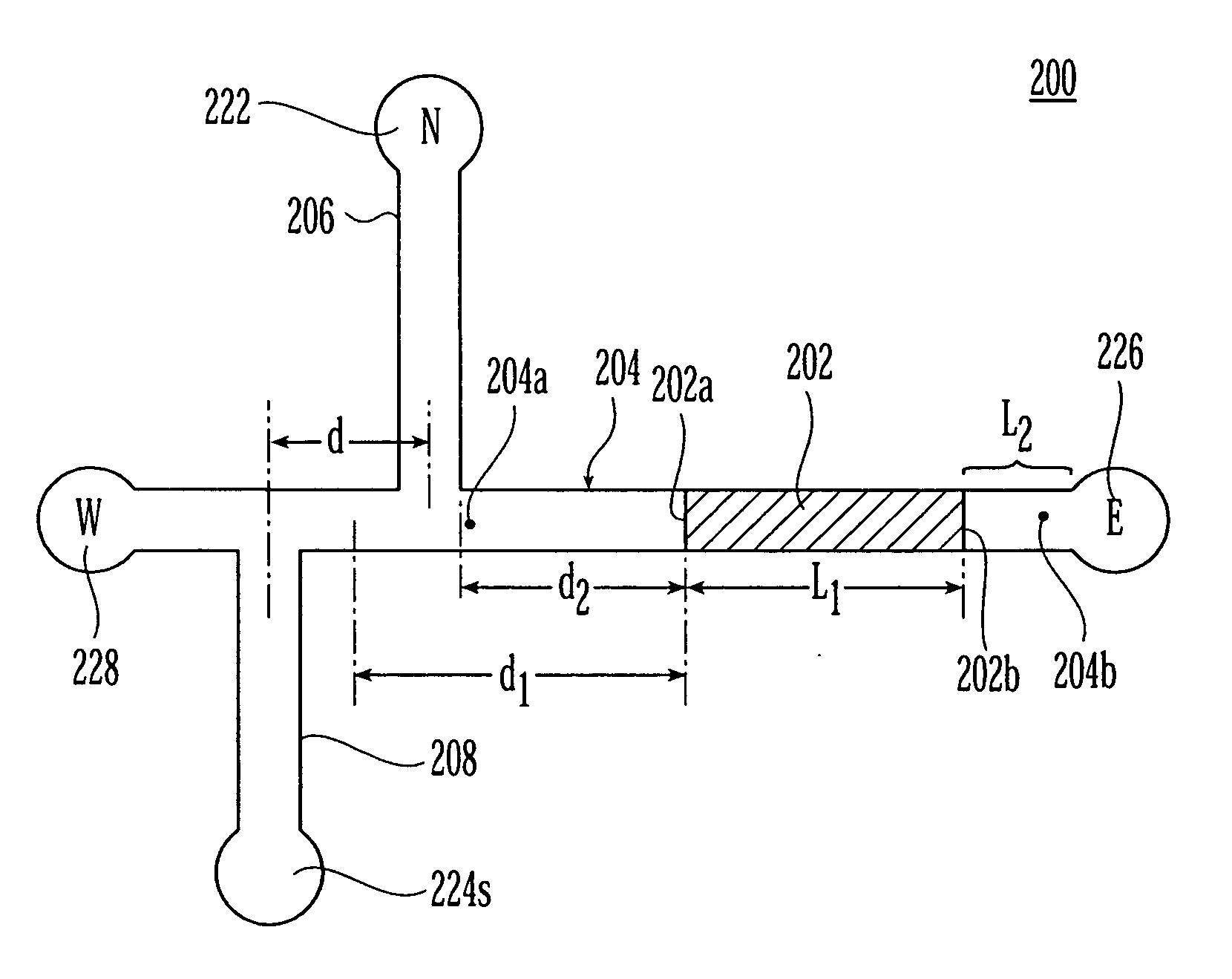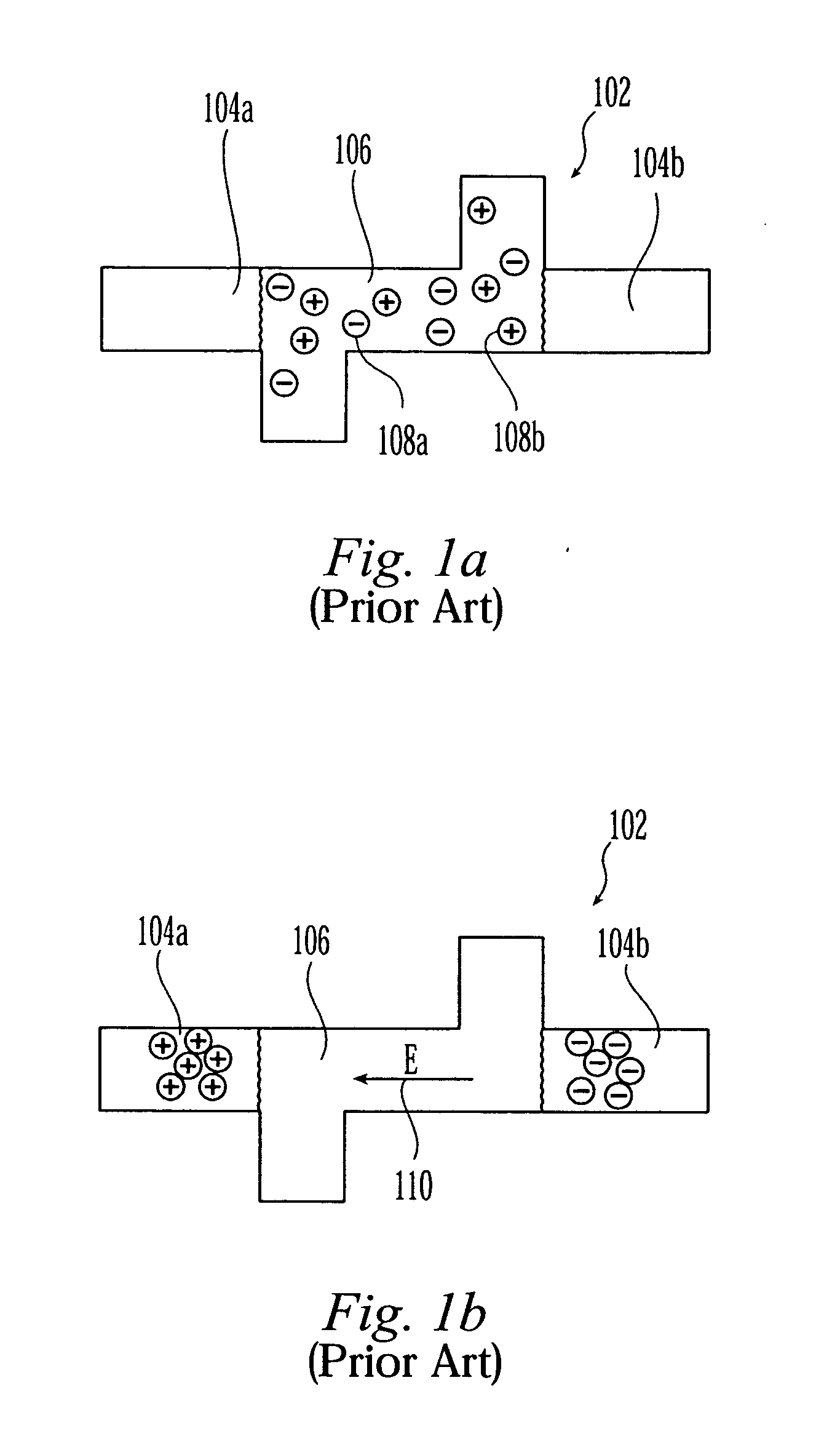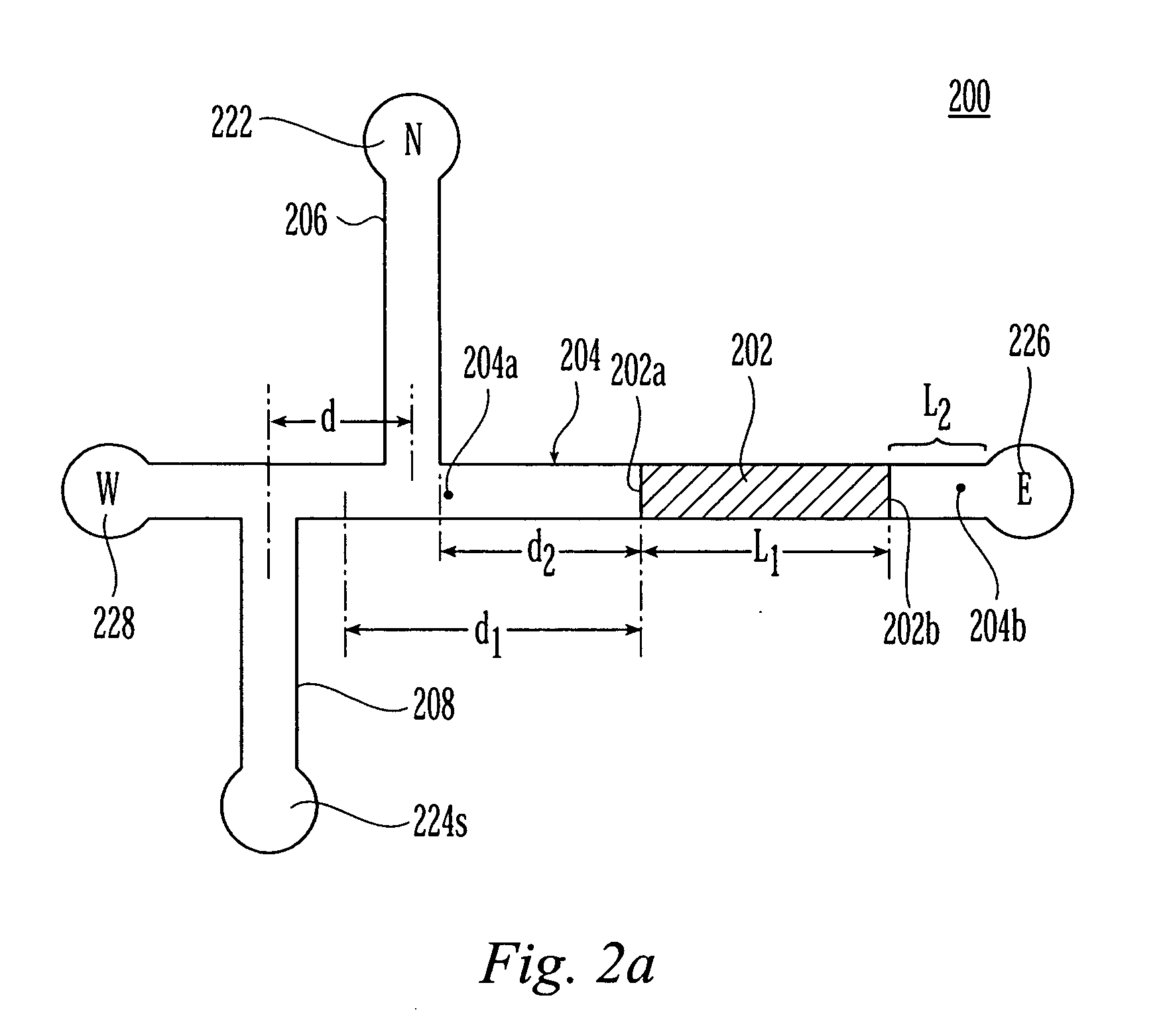Microfluidic electrophoresis chip having flow-retarding structure
a microfluidic electrophoresis and flow-retarding technology, applied in the direction of fluid pressure measurement, liquid/fluent solid measurement, peptide measurement, etc., can solve the problem of adversely affecting the detection limit (lod), and achieve the effect of reducing electrokinetic flow instabilities and high hydraulic resistan
- Summary
- Abstract
- Description
- Claims
- Application Information
AI Technical Summary
Benefits of technology
Problems solved by technology
Method used
Image
Examples
Embodiment Construction
[0025]FIG. 2a shows a microchip 200 in accordance with the present invention. The microchip 200 has a hydraulic resistance-providing structure (HRPS) 202 of length L1 along the horizontal, main separation channel 204. The HRPS 202 is positioned such that an ‘open’ channel extends on either side. Thus, the HRPS 202 has an upstream interface 202a facing an upstream portion 204a of the main separation channel 204 and a downstream interface 202b facing a downstream portion 204b of the main separation channel 204. As seen in FIG. 1, the downstream portion 204b extends for some non-zero length L2.
[0026] Connected to the main separation channel at a first channel center point is a first, or north, side channel 206. A second, or south, side channel 208 is connected to the main separation channel 204 at a second channel center point. In a preferred embodiment, the first and second channel center points are spaced apart from each other by a distance d and so the microchip has a “double-T” co...
PUM
| Property | Measurement | Unit |
|---|---|---|
| length | aaaaa | aaaaa |
| length | aaaaa | aaaaa |
| depth h1 | aaaaa | aaaaa |
Abstract
Description
Claims
Application Information
 Login to View More
Login to View More - R&D
- Intellectual Property
- Life Sciences
- Materials
- Tech Scout
- Unparalleled Data Quality
- Higher Quality Content
- 60% Fewer Hallucinations
Browse by: Latest US Patents, China's latest patents, Technical Efficacy Thesaurus, Application Domain, Technology Topic, Popular Technical Reports.
© 2025 PatSnap. All rights reserved.Legal|Privacy policy|Modern Slavery Act Transparency Statement|Sitemap|About US| Contact US: help@patsnap.com



